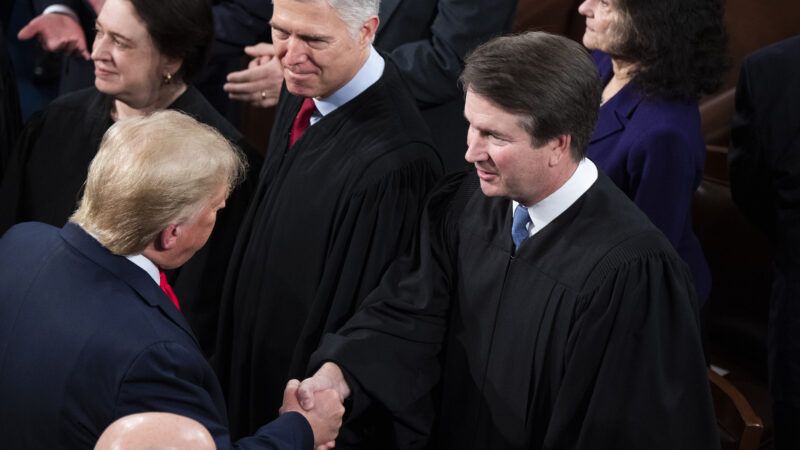Gorsuch and Kavanaugh Butt Heads in Major Immigration Case
“Our only job today, is to give the law’s terms their ordinary meanings and, in that small way, ensure that the federal government does not exceed its statutory license.”

The U.S. Supreme Court ruled 6-3 last week in favor of an undocumented immigrant seeking discretionary relief from a federal deportation proceeding. Justice Neil Gorsuch, who wrote the majority opinion, rejected what he described as the federal government's attempt "to endow the Executive Branch with maximum bureaucratic flexibility." Justice Brett Kavanaugh, who wrote the dissent, attacked Gorsuch's judgment as "rather perplexing as a matter of statutory interpretation and common sense." Their war of words spilled out over many pages.
The case is Niz-Chavez v. Garland. According to federal immigration law, a nonpermanent resident subject to removal proceedings may seek relief from the attorney general, who has the discretionary authority to "cancel removal" and adjust immigration status if the alien in question has maintained 10 years of continuous physical presence in the U.S. The law further states that "any period…of continuous physical presence in the United States shall be deemed to end…when the alien is served a notice to appear." A "notice to appear" is defined by statute as a "written notice" and it must specify the "time or place of the proceedings."
Agusto Niz-Chavez received two documents from federal immigration authorities. The first one informed him of the charges against him. The second document, sent two months later, told him the time and place of his hearing. The question before the Supreme Court was whether those two documents together qualify as "a notice to appear" that stops the clock on Niz-Chavez's continuous physical presence in the country. Put differently, depending on when the physical presence clock is stopped, an immigrant might not even qualify for discretionary relief in such cases.
Justice Gorsuch, joined by Justices Clarence Thomas, Stephen Breyer, Sonia Sotomayor, Elena Kagan, and Amy Coney Barrett, held that the government's actions did not pass muster under the terms of federal immigration law. "To trigger the stop-time rule, the government must serve 'a' notice containing all the information Congress has specified," Gorsuch observed. "To an ordinary reader—both in 1996 and today—'a' notice would seem to suggest just that: 'a' single document containing the required information, not a mishmash of pieces with some assembly required."
As Gorsuch explained, this dispute was about something much bigger than a single word. "Words are how the law constrains power," he wrote. And "in this case, the law's terms ensure that, when the federal government seeks a procedural advantage against an individual, it will at least supply him with a single and reasonably comprehensive statement of the nature of the proceedings against him. If men must turn square corners when they deal with the government," Gorsuch declared, "it cannot be too much to expect the government to turn square corners when it deals with them."
Writing in dissent, Justice Kavanaugh, joined by Chief Justice John Roberts and Justice Samuel Alito, faulted Gorsuch for a nitpicky approach that "will impose substantial costs and burdens on the immigration system."
Gorsuch responded by criticizing Kavanaugh's dissent for offering a "raw consequentialist calculation" that "tried to predict how the government will react to a ruling that requires it to follow the law and then proceeds to assess the resulting 'costs' and 'benefits.'"
"Our only job today," Gorsuch maintained, "is to give the law's terms their ordinary meanings and, in that small way, ensure that the federal government does not exceed its statutory license. Interpreting the phrase 'a notice to appear' to require a single notice—rather than 2 or 20 documents—does just that."


Show Comments (53)